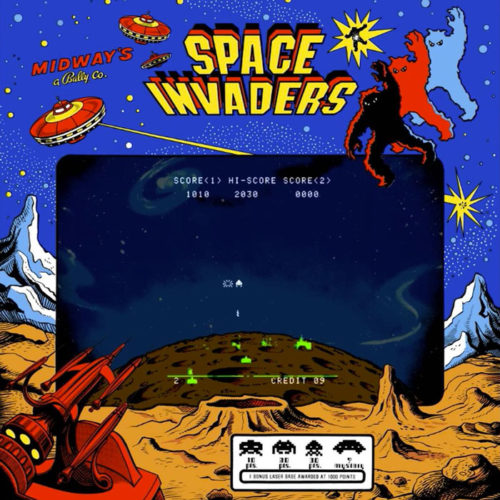-
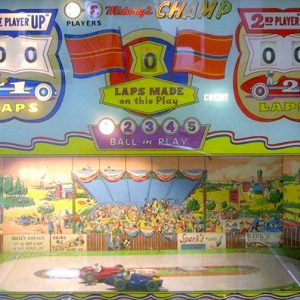
-
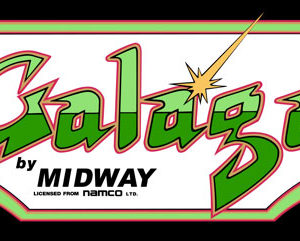 Galaga is a single-screen shoot-em-up in which the player controls a “fighter” spaceship and must defend the home planet against the on-coming hordes of alien invaders. The fighter can only move left and right along the bottom of the screen. Galaga aliens fly onto the screen in a variety of formations – dropping bombs as they do so – before forming troop lines at the top of the screen. Once a troop line is formed, the aliens separate and start attacking the player’s ship in ones, twos and threes. The top line “boss” aliens need to be shot twice before they are destroyed. The boss alien has a tractor beam that can capture the player’s fighter. A captured fighter changes color from white to red and stays with that particular boss Galaga until it’s destroyed. The fighter can be retrieved by destroying the boss Galaga that captured it, but players must be careful not to destroy the captured ship itself, or that ship is lost. A rescued fighter changes color back from red to white and links up with the player’s current fighter, doubling its fire power. As players progress through each screen, the speed and number of alien attacks increases. Alien formations also become more complex, making the aliens harder to shoot. Bonus fighters are awarded periodically throughout the game, as players reach specific point values (dictated by the “bonus life” dip-switch setting). Each enemy ship also has an assigned point value (see scoring below). The alien troop lines that form at the top of the screen are, from top to bottom: Boss Galaga, Butterflies (red/white bug ships) and Bees (blue/yellow bug ships). I cut my teeth on video games like this back in the ’80s. Pinball lost momentum in this era as video games ruled the arcade at this time.
Galaga is a single-screen shoot-em-up in which the player controls a “fighter” spaceship and must defend the home planet against the on-coming hordes of alien invaders. The fighter can only move left and right along the bottom of the screen. Galaga aliens fly onto the screen in a variety of formations – dropping bombs as they do so – before forming troop lines at the top of the screen. Once a troop line is formed, the aliens separate and start attacking the player’s ship in ones, twos and threes. The top line “boss” aliens need to be shot twice before they are destroyed. The boss alien has a tractor beam that can capture the player’s fighter. A captured fighter changes color from white to red and stays with that particular boss Galaga until it’s destroyed. The fighter can be retrieved by destroying the boss Galaga that captured it, but players must be careful not to destroy the captured ship itself, or that ship is lost. A rescued fighter changes color back from red to white and links up with the player’s current fighter, doubling its fire power. As players progress through each screen, the speed and number of alien attacks increases. Alien formations also become more complex, making the aliens harder to shoot. Bonus fighters are awarded periodically throughout the game, as players reach specific point values (dictated by the “bonus life” dip-switch setting). Each enemy ship also has an assigned point value (see scoring below). The alien troop lines that form at the top of the screen are, from top to bottom: Boss Galaga, Butterflies (red/white bug ships) and Bees (blue/yellow bug ships). I cut my teeth on video games like this back in the ’80s. Pinball lost momentum in this era as video games ruled the arcade at this time. -
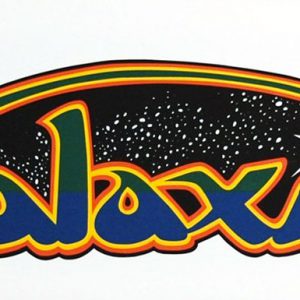 Galaxian (Gyarakushian?) is an arcade game that was developed by Namco and released in October 1979. It was published by Namco in Japan and imported to North America by Midway that December. A fixed shooter game in which the player controls a spaceship at the bottom of the screen, and shoots enemies descending in various directions, it was designed to compete with Taito Corporation’s successful earlier game Space Invaders (which was released in the previous year, and also imported to the US by Midway Games). The game was highly popular for Namco upon its release, and has been a focus of competitive gaming ever since. It spawned a successful sequel, Galaga, in 1981, and the lesser known Gaplus and Galaga ‘88 in 1984 and 1987 respectively, as well as many later ports and adaptations. Along with its immediate sequel, it was one of the most popular games during the golden age of arcade video games. Galaxian expanded on the formula pioneered by Space Invaders. As in the earlier game, Galaxian features a horde of attacking aliens that exchanged shots with the player. In contrast to Space Invaders, Galaxian added an element of drama by having the aliens periodically make kamikaze-like dives at the player’s ship, the Galaxip.[1] This made it the first game to feature enemies with individual personalities.[2] The game’s plot consists of a title screen that displayed the message “WE ARE THE GALAXIANS / MISSION: DESTROY ALIENS”.[3] Galaxian was very successful for Namco and introduced several “firsts”. Although not the first color video game, Galaxian took RGB color graphics a step further with multi-colored animated sprites and explosions, different colored fonts for the score and high score, the scrolling starfield, and graphic icons that show the number of lives left and how many stages the player had completed. It also features a crude theme song and more prominent background “music.” These elements combine to create a look and feel that would set the standard for arcade games in the 1980s such as Pac-Man. Gameplay The gameplay is relatively simple. Swarm after swarm of alien armies attack the player’s ship that moves left and right at the bottom of the wraparound screen. The ship can only have one shot on screen at a time. The player defeats one swarm, only to have it replaced by another more aggressive and challenging swarm in the next stage. A plain and repetitive starfield scrolls in the background.
Galaxian (Gyarakushian?) is an arcade game that was developed by Namco and released in October 1979. It was published by Namco in Japan and imported to North America by Midway that December. A fixed shooter game in which the player controls a spaceship at the bottom of the screen, and shoots enemies descending in various directions, it was designed to compete with Taito Corporation’s successful earlier game Space Invaders (which was released in the previous year, and also imported to the US by Midway Games). The game was highly popular for Namco upon its release, and has been a focus of competitive gaming ever since. It spawned a successful sequel, Galaga, in 1981, and the lesser known Gaplus and Galaga ‘88 in 1984 and 1987 respectively, as well as many later ports and adaptations. Along with its immediate sequel, it was one of the most popular games during the golden age of arcade video games. Galaxian expanded on the formula pioneered by Space Invaders. As in the earlier game, Galaxian features a horde of attacking aliens that exchanged shots with the player. In contrast to Space Invaders, Galaxian added an element of drama by having the aliens periodically make kamikaze-like dives at the player’s ship, the Galaxip.[1] This made it the first game to feature enemies with individual personalities.[2] The game’s plot consists of a title screen that displayed the message “WE ARE THE GALAXIANS / MISSION: DESTROY ALIENS”.[3] Galaxian was very successful for Namco and introduced several “firsts”. Although not the first color video game, Galaxian took RGB color graphics a step further with multi-colored animated sprites and explosions, different colored fonts for the score and high score, the scrolling starfield, and graphic icons that show the number of lives left and how many stages the player had completed. It also features a crude theme song and more prominent background “music.” These elements combine to create a look and feel that would set the standard for arcade games in the 1980s such as Pac-Man. Gameplay The gameplay is relatively simple. Swarm after swarm of alien armies attack the player’s ship that moves left and right at the bottom of the wraparound screen. The ship can only have one shot on screen at a time. The player defeats one swarm, only to have it replaced by another more aggressive and challenging swarm in the next stage. A plain and repetitive starfield scrolls in the background. -
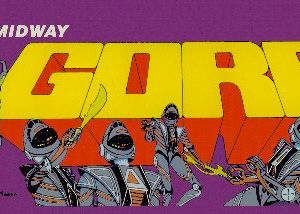 Gorf is an arcade game released in 1981 by Midway Mfg., whose name was advertised as an acronym for “Galactic Orbiting Robot Force”. It is a multiple-mission fixed shooter with five distinct modes of play, essentially making it five games in one. It is well known for its use of synthesized speech, a new feature at the time. The player controls a spaceship that can move left, right, up and down around the lower third of the screen. The ship can fire a single shot (called a “quark laser” in this game), which travels vertically up the screen. Unlike similar games, where the player cannot fire again until his existing shot has disappeared, the player can choose to fire another shot at any time; if the previous shot is still on screen, it disappears. Gorf consists of five distinct “missions”, each with its own patterns of enemies. The central goal of each mission is to destroy all enemies in that wave, which takes the player to the next mission. Successfully completing all five missions will increase the player’s rank and loop back to the first mission, where play continues on a higher difficulty level. The game continues until the player loses all their lives. The player can advance through the ranks of Space Cadet, Space Captain, Space Colonel, Space General, Space Warrior, and Space Avenger, with a higher difficulty level at each rank. Along the way, a robotic voice heckles and threatens the player, often calling the player by his current rank (for example, “Some galactic defender you are, Space Cadet!”). Some versions also display the player’s current rank via a series of lit panels in the cabinet. The missions are: 1.Astro Battles: The first mission is almost an exact clone of Space Invaders. This is the only mission that is not set in space, but rather against a sky-blue background. A small force of enemies (24 in Gorf vs. 55 in Space Invaders) attacks in the classic pattern set by the original game. The player is protected by a glittering parabolic force field that is gradually worn away by enemy fire. The force field switches off temporarily while the player’s shots pass through it. 2.Laser Attack: In this mission, the player must battle two formations of five enemies each. Each formation contains three yellow enemies that attempt to dive-bomb the player, a white gun that fires a single laser beam, and a red miniature version of the Gorf robot. 3.Galaxians: This mission is a clone of Galaxian, with the key differences being the number of enemies (24 in Gorf vs. 46 in Galaxian) and the way the enemies fire (pellets in Gorf, missiles in Galaxian). Gameplay is otherwise similar to the original game. 4.Space Warp: Mission 4 places the player in a sort of wormhole, where enemies fly outward from the center of the screen and attempt to either shoot down or collide with the player’s ship. It is possible to shoot enemy shots in this level. 5.Flag Ship: The Flag Ship is protected by its own force field (similar to the one protecting the player in Mission 1), and it flies back and forth and fires at the player. To defeat it, the player must break through the force field and destroy the ship’s core: if a different part of the ship is hit the player receives bonus points and the part breaks off and flies in a random direction, potentially posing a risk to the player’s ship. If the player successful hits the Flag Ship’s core, the Flag Ship explodes in a dramatic display, the player advances to the next rank, and play continues on Mission 1, with the difficulty increased.
Gorf is an arcade game released in 1981 by Midway Mfg., whose name was advertised as an acronym for “Galactic Orbiting Robot Force”. It is a multiple-mission fixed shooter with five distinct modes of play, essentially making it five games in one. It is well known for its use of synthesized speech, a new feature at the time. The player controls a spaceship that can move left, right, up and down around the lower third of the screen. The ship can fire a single shot (called a “quark laser” in this game), which travels vertically up the screen. Unlike similar games, where the player cannot fire again until his existing shot has disappeared, the player can choose to fire another shot at any time; if the previous shot is still on screen, it disappears. Gorf consists of five distinct “missions”, each with its own patterns of enemies. The central goal of each mission is to destroy all enemies in that wave, which takes the player to the next mission. Successfully completing all five missions will increase the player’s rank and loop back to the first mission, where play continues on a higher difficulty level. The game continues until the player loses all their lives. The player can advance through the ranks of Space Cadet, Space Captain, Space Colonel, Space General, Space Warrior, and Space Avenger, with a higher difficulty level at each rank. Along the way, a robotic voice heckles and threatens the player, often calling the player by his current rank (for example, “Some galactic defender you are, Space Cadet!”). Some versions also display the player’s current rank via a series of lit panels in the cabinet. The missions are: 1.Astro Battles: The first mission is almost an exact clone of Space Invaders. This is the only mission that is not set in space, but rather against a sky-blue background. A small force of enemies (24 in Gorf vs. 55 in Space Invaders) attacks in the classic pattern set by the original game. The player is protected by a glittering parabolic force field that is gradually worn away by enemy fire. The force field switches off temporarily while the player’s shots pass through it. 2.Laser Attack: In this mission, the player must battle two formations of five enemies each. Each formation contains three yellow enemies that attempt to dive-bomb the player, a white gun that fires a single laser beam, and a red miniature version of the Gorf robot. 3.Galaxians: This mission is a clone of Galaxian, with the key differences being the number of enemies (24 in Gorf vs. 46 in Galaxian) and the way the enemies fire (pellets in Gorf, missiles in Galaxian). Gameplay is otherwise similar to the original game. 4.Space Warp: Mission 4 places the player in a sort of wormhole, where enemies fly outward from the center of the screen and attempt to either shoot down or collide with the player’s ship. It is possible to shoot enemy shots in this level. 5.Flag Ship: The Flag Ship is protected by its own force field (similar to the one protecting the player in Mission 1), and it flies back and forth and fires at the player. To defeat it, the player must break through the force field and destroy the ship’s core: if a different part of the ship is hit the player receives bonus points and the part breaks off and flies in a random direction, potentially posing a risk to the player’s ship. If the player successful hits the Flag Ship’s core, the Flag Ship explodes in a dramatic display, the player advances to the next rank, and play continues on Mission 1, with the difficulty increased. -
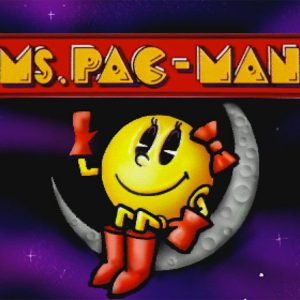 In this, the first proper sequel to Namco’s legendary pill-eating maze game, players must once again run around a number of mazes, eating all of the pills that are scattered throughout. The ever-present ghosts (Blinky, Pinky, Inky and Sue) return to hamper the player’s progress. The infamous “power pills” are also present and correct, with four appearing in each maze. Namco introduced a number of changes and enhancements over the original game. The first difference is in the main character. For the first time in video-game history, the game’s lead character was female. Ms. Pac-man is almost identical to the original character with two main differences: she wears a bow in her “hair” and is also wearing lipstick. Another change from the original is that the bonus fruit items are no longer static but now move randomly around the mazes. Ms. Pac-man features four different maze layouts, which alternate every two to four screens: the first maze is only encountered in rounds 1 and 2 and has 220 dots and four power pills. There are two sets of tunnels in this maze equidistant from the center of the maze. You must clear this maze twice before moving on to the next maze. The second maze is only encountered in rounds 3, 4, and 5, and has 240 dots and four power pills. There are two sets of tunnels in this maze: one set in the lower half, and the other set at the very top. You must clear this maze three times before moving on to the next maze. The third maze is first encountered in round 6 and has 238 dots and four power pills. Unlike all other mazes, there is only one set of tunnels in this maze, slightly above the center of the board. You must clear this maze four times before moving on to the next maze. The fourth and final unique maze is first encountered in round 10 and has 234 dots and four power pills. There are two sets of tunnels in this maze, directly next to one another in the middle of the maze. The turns at the entrance to the tunnels change the usual immediate accessibility of the tunnels and should be taken into account. You must clear this maze four times before moving on to the next maze.
In this, the first proper sequel to Namco’s legendary pill-eating maze game, players must once again run around a number of mazes, eating all of the pills that are scattered throughout. The ever-present ghosts (Blinky, Pinky, Inky and Sue) return to hamper the player’s progress. The infamous “power pills” are also present and correct, with four appearing in each maze. Namco introduced a number of changes and enhancements over the original game. The first difference is in the main character. For the first time in video-game history, the game’s lead character was female. Ms. Pac-man is almost identical to the original character with two main differences: she wears a bow in her “hair” and is also wearing lipstick. Another change from the original is that the bonus fruit items are no longer static but now move randomly around the mazes. Ms. Pac-man features four different maze layouts, which alternate every two to four screens: the first maze is only encountered in rounds 1 and 2 and has 220 dots and four power pills. There are two sets of tunnels in this maze equidistant from the center of the maze. You must clear this maze twice before moving on to the next maze. The second maze is only encountered in rounds 3, 4, and 5, and has 240 dots and four power pills. There are two sets of tunnels in this maze: one set in the lower half, and the other set at the very top. You must clear this maze three times before moving on to the next maze. The third maze is first encountered in round 6 and has 238 dots and four power pills. Unlike all other mazes, there is only one set of tunnels in this maze, slightly above the center of the board. You must clear this maze four times before moving on to the next maze. The fourth and final unique maze is first encountered in round 10 and has 234 dots and four power pills. There are two sets of tunnels in this maze, directly next to one another in the middle of the maze. The turns at the entrance to the tunnels change the usual immediate accessibility of the tunnels and should be taken into account. You must clear this maze four times before moving on to the next maze. -
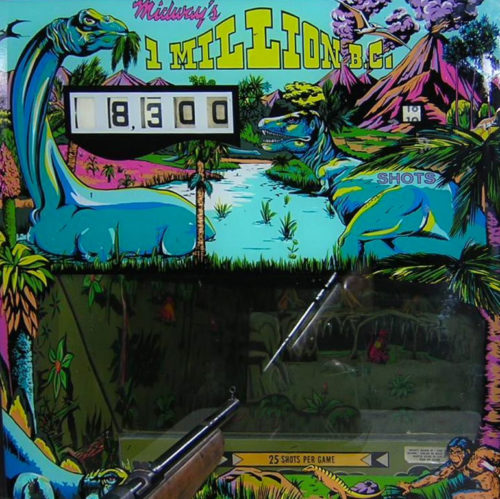
-
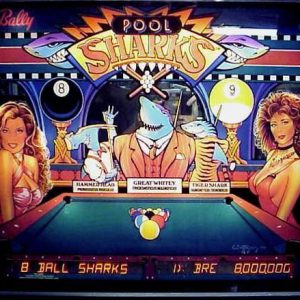
-
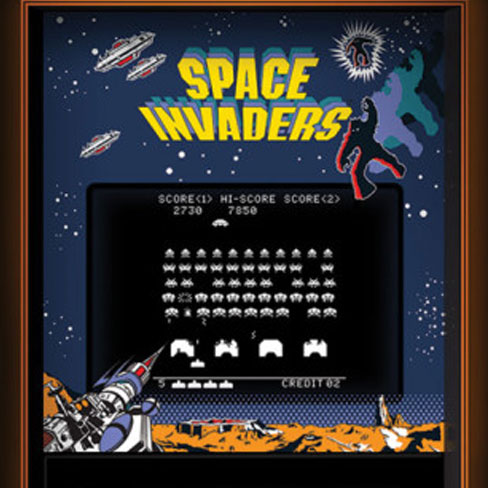
-
